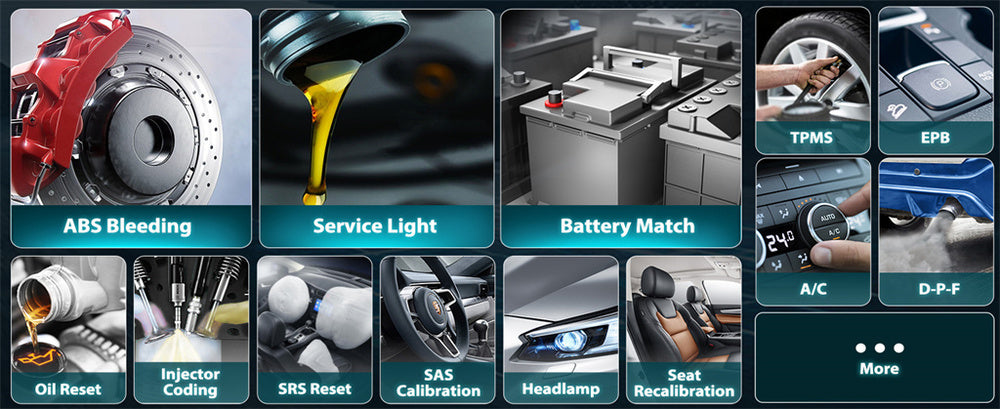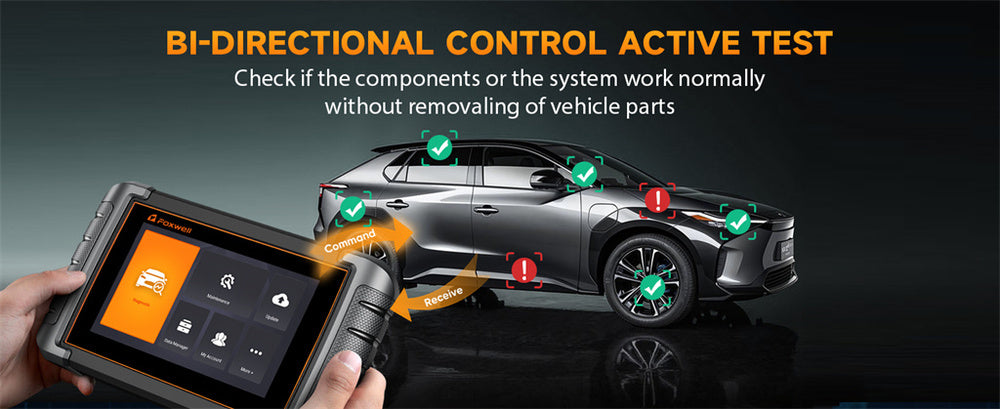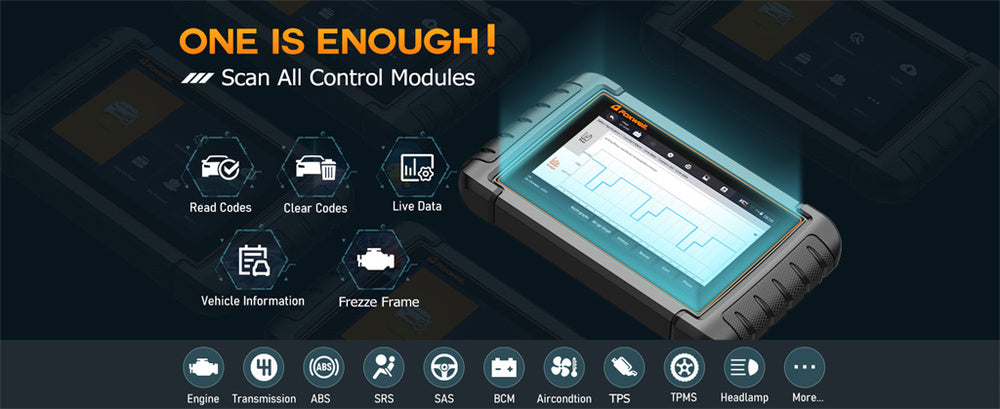Have you experienced that pesky check engine light popping up on your dashboard, only to clear it with the hope of fixing the issue immediately?
While hitting the reset button may appear like an easy solution, it's not always that straightforward.
When clearing diagnostic codes, does your car simply forget about them, or do scanners still detect the issues?
Here, we explore what happens after codes have been cleared, whether scanners detect them afterward, and why understanding this process is key to maintaining optimal vehicle health.
Can Diagnostic Scanners Detect Cleared Codes?

So you've cleared a diagnostic code on your car - that annoying check engine light has finally gone off - but now what? Well, not necessarily forever... it gets even more interesting here! Here's where things become interesting.
Clearing a code won't erase its history completely. Modern vehicle systems store data, like files on your computer that appear deleted when you "delete" something. This data can help technicians better understand recurring problems or gain a deeper insight into what's happening under the hood.
Why does my car retain this data even after clearing it?
Think of it like your car's memory: Even though a standard scan may no longer display the code, its history remains somewhere within its system should something go wrong again. Therefore, do scanners still detect cleared codes?
Types of Diagnostic Scanners: Which Ones Can Access Cleared Codes?
You cleared a code, and now the scanner shows nothing? Think again. While most standard OBD-II scanners won't show the cleared code immediately, more advanced tools and manufacturer-specific scanners may offer additional information regarding past cleared codes.
Imagine trying to conceal an unsightly mess in your room by stuffing everything into the closet.
At first glance, everything appears tidy, but an attentive visitor (or, in this case, a more advanced scanner) may uncover all sorts of goodies inside. In other words, even after clearing code from an issue, advanced tools often retrieve "hidden" data that helps technicians diagnose repeatable problems more effectively.
Types of Diagnostic Scanners: Which Scanners Access Cleared Codes?
Not all diagnostic scanners are created equal. Basic plug-and-play OBD-II scanners—like the type many drivers utilize—can only read active codes; once cleared, they no longer appear. More sophisticated scanners offer access to more data stored within a car's memory.
Basic OBD-II Scanners: These are straightforward, user-friendly, and designed to show current trouble codes and freeze frame data. Once a code is cleared from view, it is cleared off the scanner's memory stick.
Professional Diagnostic Tools: Advanced tools like the Foxwell NT909 enable mechanics to read active codes and historical data even after cleared codes have been reset, providing more robust access to system info that may reveal more significant problems that cleared codes might mask.
Manufacturer-Specific Scanners: These scanners delve deep into a specific car brand's system, often providing more comprehensive diagnostic data - including history on cleared codes.
Suppose a code has been cleared, but something still appears amiss. In that case, seeking professional assistance with one of these more advanced tools might be beneficial.
How Are Fault Codes Stored and Deleted in Vehicles?
Let's get technical: when your car detects a problem, it generates a Diagnostic Trouble Code (DTC) and stores it in its Engine Control Module (ECM). That's when the check engine light illuminates.
Clearing a code means sending a command to delete the DTC from ECM memory; however, only some vehicles entirely forget this data since some may remain stored in nonvolatile memory, even after restarts and code-clearing attempts.
Nonvolatile memory could contain details such as when and how often a problem occurred and other relevant information that can provide clues to solving an issue.
As technicians investigate intermittent or recurring issues, this deeper level of data can be invaluable in pinpointing problems more quickly and accurately. While clearing a code might appear like clearing away history, your vehicle's memory holds more sophisticated records.
Common Outcomes After Clearing Diagnostic Codes
After not tightening the gas cap correctly, you cleared a diagnostic code, which caused the check engine light to illuminate, seemingly an easy solution. Once removed, everything seemed okay until suddenly--some weeks later--your check engine light reappeared. What gives?
Clearing codes remove your vehicle's ability to monitor an issue once it is addressed. Leaving unaddressed issues unchecked can lead to similar symptoms resurfacing in due course. If left unaddressed, any underlying problems will resurface over time.
Or perhaps you plan on selling your car and want to clear all codes before listing or inspecting it, just in case someone suspects something amiss with it. But be wary; any experienced mechanic can identify code-clearing activity, which may raise red flags with buyers if they believe you may be covering up an underlying issue.
How Clearing Codes Affects Emission Testing and Vehicle Inspections
Did you know that clearing codes could negatively affect your car's readiness for emissions testing?
After a code is cleared, the internal computer needs time to rerun its internal checks to make sure all systems are operating smoothly again; this is called a "readiness monitor."
Suppose you take your car for an emissions test too soon after clearing a code. In that case, its system might not be ready and may cause you to fail the inspection--even if everything seems fine with its operation!
It would be like showing up for an exam without giving itself time to run through its internal diagnostics system again to ensure everything is kosher.

Legal and Compliance Concerns Around Clearing Diagnostic Codes
Let's be realistic: clearing diagnostic codes is only sometimes convenient, especially for minor issues like loose gas caps, but legal and compliance considerations are associated with doing so.
In certain regions, selling cars with known issues or newly cleared codes that might obscure significant problems can be illegal; buyers also have the right to know all details of a vehicle's history, and dealerships must disclose any such activity.
As noted, meddling with emissions-related diagnostic codes could land you in legal hot water. Clearing emissions codes without addressing their root cause is illegal in many areas.
It could incur fines, so while it might be tempting to turn off that check engine light immediately, it would be more prudent to address its cause first.
Conclusion
So, should you clear that pesky code? It depends. If you know what caused it and have addressed it successfully, clearing the code may help reset your system and see if the fix holds. Otherwise, take care when clearing it if there are unknown triggers behind it or if you just want the warning light gone altogether.
Diagnostic codes are your vehicle's way of telling you when something's amiss. Clearing them without understanding why is like turning off an alarm without understanding why; doing so could prove disastrous!
Clearing a code may be beneficial, but it should serve as something other than a replacement for proper diagnosis and repair. Listen to your vehicle, investigate when something seems amiss, and don't be afraid to seek professional assistance when necessary; having a well-maintained car means fewer surprises on the road and an overall happier driver experience.
FAQs
Can I use my phone as a car code reader?
Yes, with an OBD2 Bluetooth adapter and a compatible app, you can use your phone to read and clear codes from your car’s system.
Can an OBD2 scanner detect misfires?
Yes, most OBD2 scanners can detect engine misfires by reading misfire-related trouble codes (usually P0300-P0312).
How can I find the code to my car without a scanner?
Some vehicles allow you to retrieve codes by turning the ignition key in a specific sequence, or by using the car's dashboard display. Check your owner's manual for the procedure specific to your vehicle.




Leave a comment
This site is protected by hCaptcha and the hCaptcha Privacy Policy and Terms of Service apply.